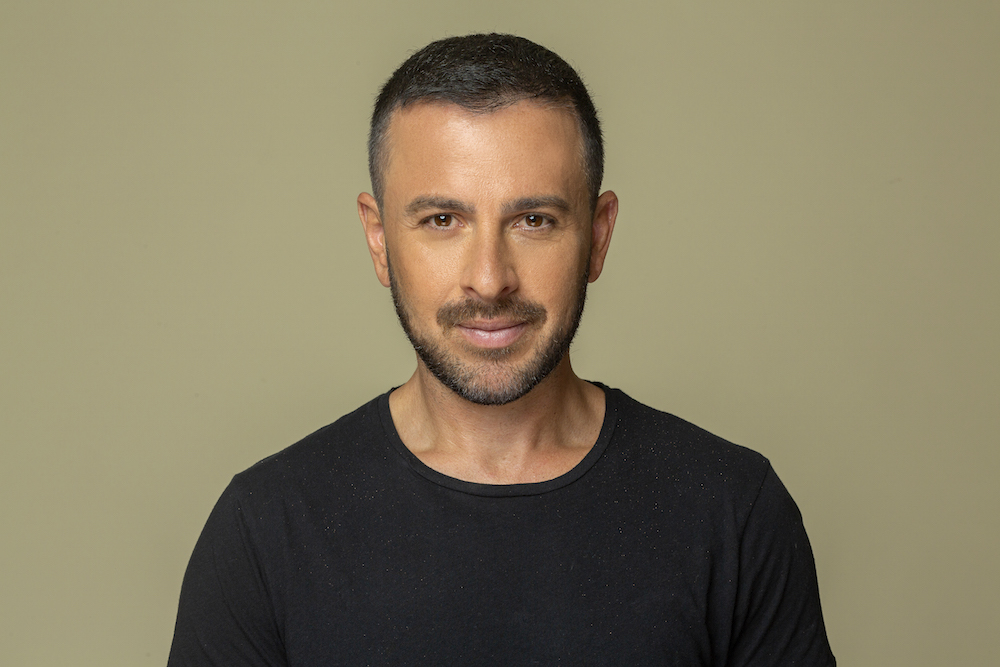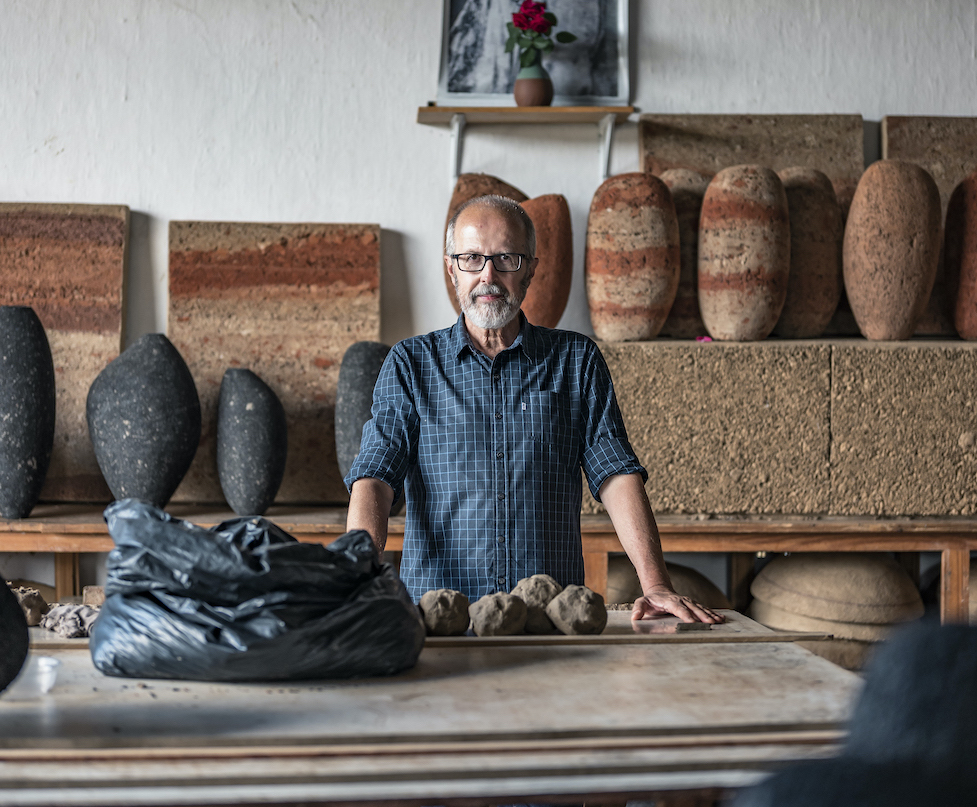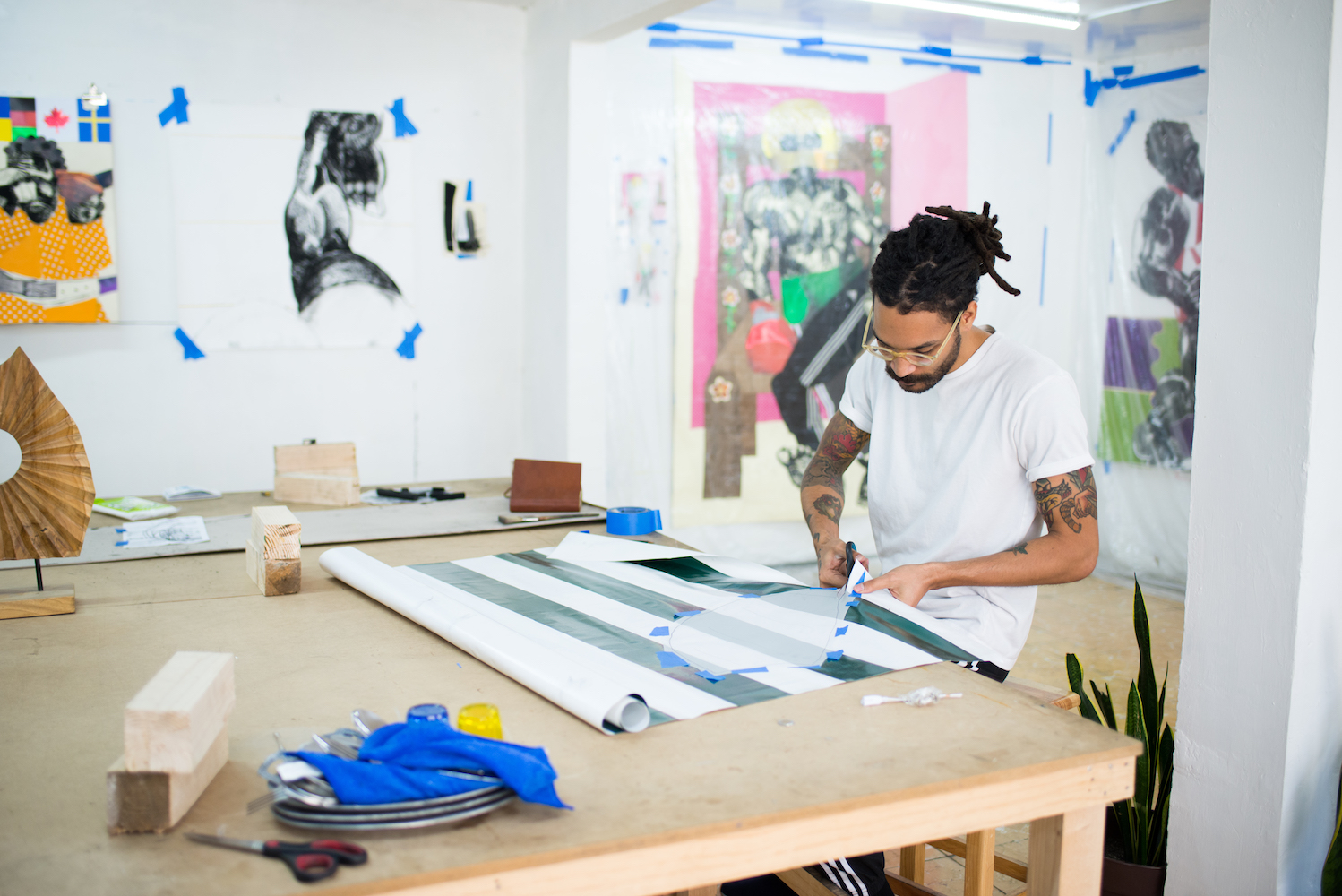Japanese culture has always fascinated Steeve Nassima. So it’s not surprising that the first works the Belgian businessman turned art advisor was drawn to were by artists like Nobuyoshi Araki. But it was an encounter with a piece by Yayoi Kusama that really kick-started his—dare we say—obsession.
Nassima’s collection over the past 25 years has grown to include works by Henry Taylor, Ugo Rondinone, George Condo, Hernan Bas, and, most recently, Vojtěch Kovařík. What’s on his walls is constantly changing, reflecting a personal energy even he would describe as hyperactive. His excitement for contemporary art is palpable, and it has led to his current partnership with Suzanne Landau, the former director of the Tel Aviv Museum of Art.
Whitewall spoke with the collector about the latest studio visits and shows he’s still thinking about, and why legacy is not yet part of his lexicon.
WHITEWALL: You acquired your first work at the age of 21, as a student. How did the collecting bug bite you early?
STEEVE NASSIMA: After taking on a student job as a realty broker in the streets of Brussels, I made my first euros on my own. At that stage, I was wondering what would be the best way to preserve and grow that little initial capital. Well, across from my student flat was a gallery with some photographs that intrigued me by Nobuyoshi Araki. I right away felt a connection to the provocative style of the works, which were symptomatic and a reaction to the conservative Japanese mainstream. “Calm waters run deep.” At that point I would call my first acquisition a well-calculated investment on top of a feel-good buy. It was only years later, with the acquisition of my first Yayoi Kusama, that the art bug really hit me.
WW: Do you still have that Nobuyoshi Araki piece?
SN: Yes. It hangs in my room.
WW: How did you become engrossed in the work of Yayoi Kusama?
SN: Instant love. Instant understanding. Japanese culture has always fascinated me, especially after spending a few months there in the early nineties. I seek elegance, emotions, and looking up to a life worth living. Kusama is just that.
WW: What kind of work and which artists were you drawn to early on?
SN: I was mostly drawn to photography early on. In retrospect, I have realized most of those works have a cosmopolitan feel or an element of societies to which I greatly connect. Probably the consequence of growing up in a small town—Antwerp—and my attraction to the big, urban, international cities.
WW: How has your collection grown and evolved over the past two decades?
SN: In many different ways. I have personally grown and continue to refine my taste every day. Today, my collection includes a wide variety of Kusama artworks in different media as well as, recently, Hernan Bas, Henry Taylor, or Robert Mangold. I can connect to many different streams.
WW: Is it important for you to have a personal relationship with the artists whose work you collect?
SN: Had you asked me this question a week ago, I would have said no. But after meeting Henry Taylor during Frieze Los Angeles, I feel completely differently about it. His warm, addictive, unconventional, and unique personality now completes my understanding of his work.
WW: Your collection has grown to include major artists like Yayoi Kusama, as you mentioned, George Condo, Ugo Rondinone, Takashi Murakami, Louise Bourgeois . . . but you also collect the work of emerging artists. Can you tell us about who you’re excited about at the moment?
SN: I am extraordinarily excited about a Hernan Bas I just acquired. It was a work I instantly connected to from his “Venice” series and I already knew, together with Marc, where in our living room it would hang. I also just got a work by Vojtěch Kovařík. A good friend recommended him, I instantly connected, and got a large work from this very young artist.
WW: How do you prefer to acquire works—fairs, galleries, auctions, et cetera?
SN: My prime focus is my relationships with the galleries. But in today’s global interconnected art scene, being on good terms with all players is essential.
WW: Has it always been important for you to practice lending work from your collection to museums and institutions?
SN: It was my instant click with Suzanne Landau, the former director of the Tel Aviv Museum of Art, which led me to loan works to the museum. It was my way, with my limited capacities then, to support what I saw as the leading but also indispensable cultural institution of the incredible city of Tel Aviv.
WW: When did you move from a career in diamonds and jewelry to solely contemporary art?
SN: It has been five years now.
WW: How would you describe your role as an art advisor?
SN: It is a partial side of my activities. Teaming up with Suzanne made us realize we had a lot to offer. My experience of 25 years of collecting and my—I must admit—quite successful business skills are an asset in this highly competitive and crowded art world. Suzanne’s contribution is undisputed: She discovered Basquiat in 1982 and acquired two works for the Israel Museum then. In her position as chief curator of the Israel Museum in those days, it also was the first cultural institution to acquire a Damien Hirst. Put our two past decades together and you have a lot of experience and two experts that really complement each other.
WW: Any recent acquisitions you can tell us about?
SN: I still get excited about every Kusama I either buy for myself or my clients. I am very proud of a specially commissioned work by Ugo Rondinone—a stunning sculpture from the stone men series featuring a duo. It is now on display at the Tel Aviv Museum of Art. It is the ultimate refinement.
WW: How do you live at home with art? Is the curation constantly changing?
SN: I am hyperactive by nature. One can notice this on my walls. I keep making changes.
WW: Is there a work you love to see first thing in the day, at home or at the office?
SN: A 1979 work on paper by Kusama hanging in my bathroom. With my eyes half open, it is the first colorful thing I see in my day.
WW: What’s a show you’ve seen recently you’re still thinking about?
SN: Antony Gormley at the Royal Academy last November in London and the William Kentridge exhibit curated by Ruti Direktor at the Tel Aviv Museum of Art.
WW: Do you think about legacy in terms of your collection?
SN: I think I will be eternally young, so legacy is not yet part of my lexicon.









